How to Mix Wood Tones in Your Home Like a Designer
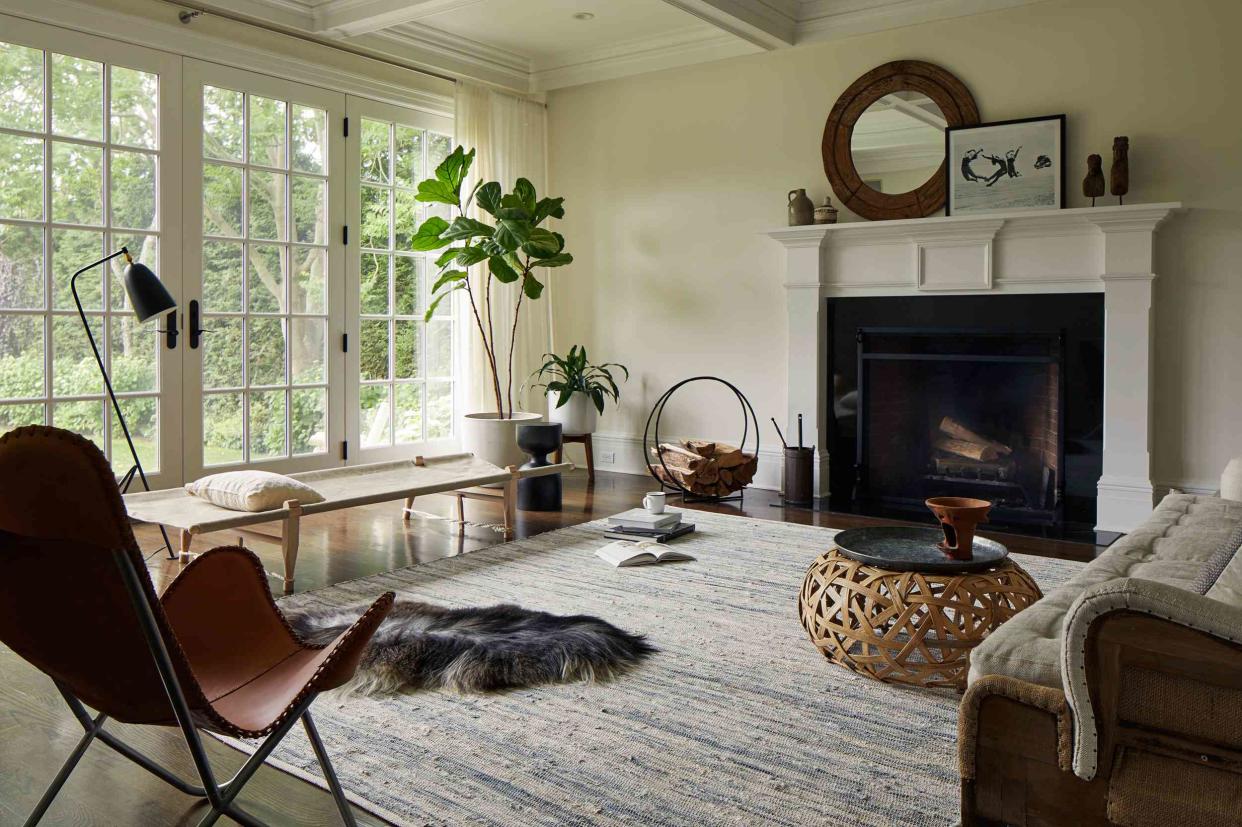
While people are getting more and more adventurous with mixing periods and styles in their home, one of the puzzling questions we're always asked as editors is how to mix wood tones in a room. Whether it's matching a dining table to an existing hardwood floor or trying to mix various wood furniture pieces together, some folks are hesitant to combine different woods in a space. But trust us, the era of matchy-matchy furniture is over. Say goodbye to the furniture sets of yore, because mixing wood tones can be simple and effective. The only trick is to follow a few foolproof rules.
The goal in design when mixing anything from colors to styles is to create continuity—a design conversation or story, if you will. By paying attention to details like undertones, finish, and wood grain, it becomes easier to pair items confidently. Ready to try mixing wood tones in your own space? Ahead, we share six helpful tips and tricks.
Pick a Dominant Wood Tone
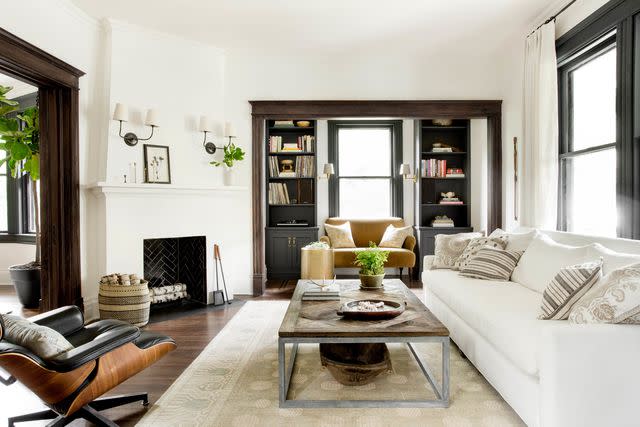
Mixing wood tones is perfectly acceptable, but it always helps to pick a dominant wood tone as a starting point to help you choose other pieces to bring in the room. If you have wood floors, your work here is done—they are your dominant wood tone. Otherwise, pick the largest furniture piece in the room like a desk, dresser, or dining table. When choosing your other wood tones to add to the space, always consult your dominant shade first.
Learn More: 5 Things to Keep in Mind While Mixing and Matching Wood Tones
Match the Undertones
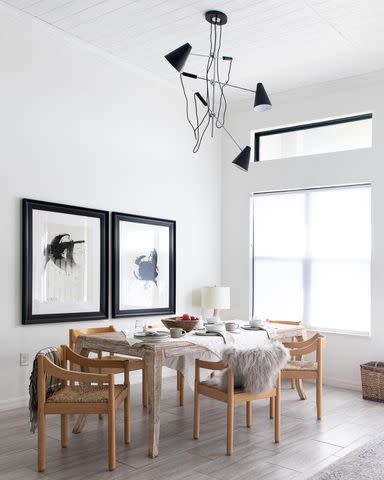
Another helpful tip for mixing wood tones is to match the undertones between different pieces. Just like you would when choosing new makeup, figuring out undertones first can make all of the difference. Pay attention to whether your dominant wood tone is warm, cool, or neutral, and stay in the same family to create a coherent thread. In this dining room, the warm wood of the chairs picks up some of the warmer streaks in the wood floor and blends seamlessly with the warm grains of the birch dining table.
Mix Wood Tones Using Contrast
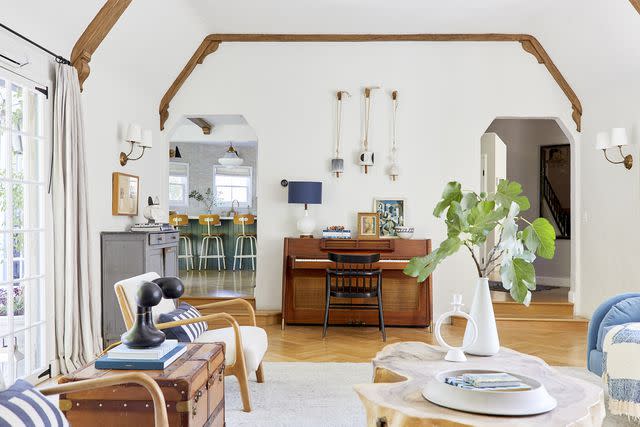
Design: Emily Henderson Design, Photo: Sara Ligorria-Tramp
If you're feeling more daring, contrast is your friend. It may seem counterintuitive, but going for high-contrast shades can actually work seamlessly. In this living room, for instance, the light warm wood floors are complemented with a dark, almost inky, walnut chair and plenty of medium wood tones on the piano and ceiling beams. Playing with contrast in mixed wood furniture adds visual interest and gives a design more depth, while repeated shades (like the warm wood floors and matching accent chairs) gives the space some continuity.
Create Continuity With Finish
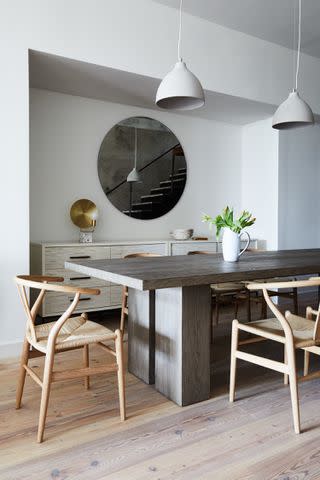
If your wood tones are all over the place, it can be helpful to create continuity with similar wood grains or finishes. For example, most of the finishes in this room are matte or eggshell with a rustic grain finish, so the room looks cohesive. If your wood floor or table is glossy, follow suit and choose side tables or chairs in a glossier finish.
Break It Up With a Rug
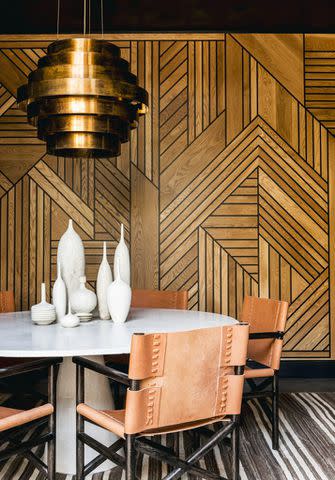
Breaking up your wood elements with a rug can make a huge difference, especially if your furniture and wood floors have a similar wood tone. A complementary statement rug helps to visually break up repeated shades. In the pictured living room, the legs of the dining chairs may have blended too much if placed directly on the wood floors, but with a striped rug in between, they fit in and don't look out of place.
Tips
If your furniture and wood floors are drastically different in color, a patterned statement-making rug can also help minimize the contrast between the two.
Keep It on Repeat
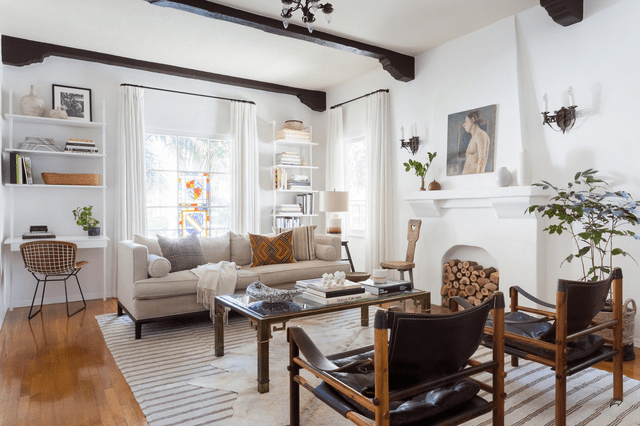
Once you find the shades that work, just rinse and repeat. In this living room, the dark walnut of the ceiling beams is picked up by the legs of the couch and coffee table, while the lighter wood floor matches the accent chairs. Having recurring wood tones in your room provides a visual structure, so it looks put-together without trying too hard. Repeating each shade a minimum of two times is a foolproof way to nail this look.
Up Next: 7 Foolproof Tips for Mixing Furniture Styles
Read the original article on MyDomaine.

